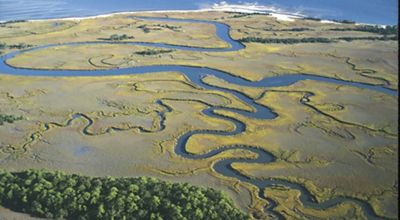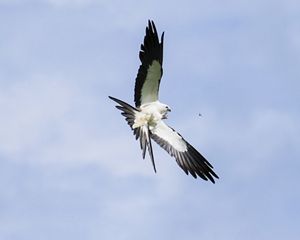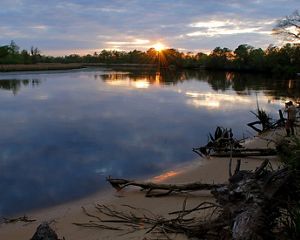
Bald Eagle Restoration
Bald eagles are an enduring symbol of the United States. Find out what it took to bring them back from the brink.
Nearly thirty years ago, nature reached a milestone many thought would never come: Bald eagles were removed from the federal endangered species list. While the eagle remained “threatened” until 2007, its reclassification on July 12, 1995, marked one of the greatest species comebacks on record—one that continues today.
Why Were Bald Eagles Endangered?
Hunting, habitat loss and thin, brittle eggshells caused by the pesticide DDT all conspired to decimate eagle populations in the mid-1900s. By 1963, fewer than 500 pairs were documented in the wild.
This alarming population decline was reversed by not only banning harmful chemicals, but also prioritizing eagle habitat protection. In South Carolina, active eagle nests have grown from just 30 in the late 1970s to about 475 in 2022.

Bald Eagle Recovery in South Carolina
Eagles live where they like to hunt, near slow-moving water filled with both fish and waterfowl. They also need lots of room! Both factors make South Carolina’s ACE (Ashepoo-Combahee-Edisto) Basin a hotspot for nesting eagle pairs.
“You’ve got huge development in Charleston and in Beaufort County, and then there’s a stretch between,” says David Bishop, The Nature Conservancy’s ACE Basin project director. “The ACE Basin is that space between the people. Eagles need that.”
With your support, The Nature Conservancy has protected more than 83,500 acres in the ACE Basin since 1969. We also recently added 2,110 acres to the Waccamaw National Wildlife Refuge, another prime nesting territory for bald eagles and other raptors. Protecting habitat for these iconic birds is key to helping their populations continue to rebound.
Read about other endangered species (including South Carolina's American Alligator) that have come back from the brink in the 50 years since the Endangered Species Act was passed!
Support South Carolina Nature
Help us work with landowners and ensure a future in which people and nature can thrive.


